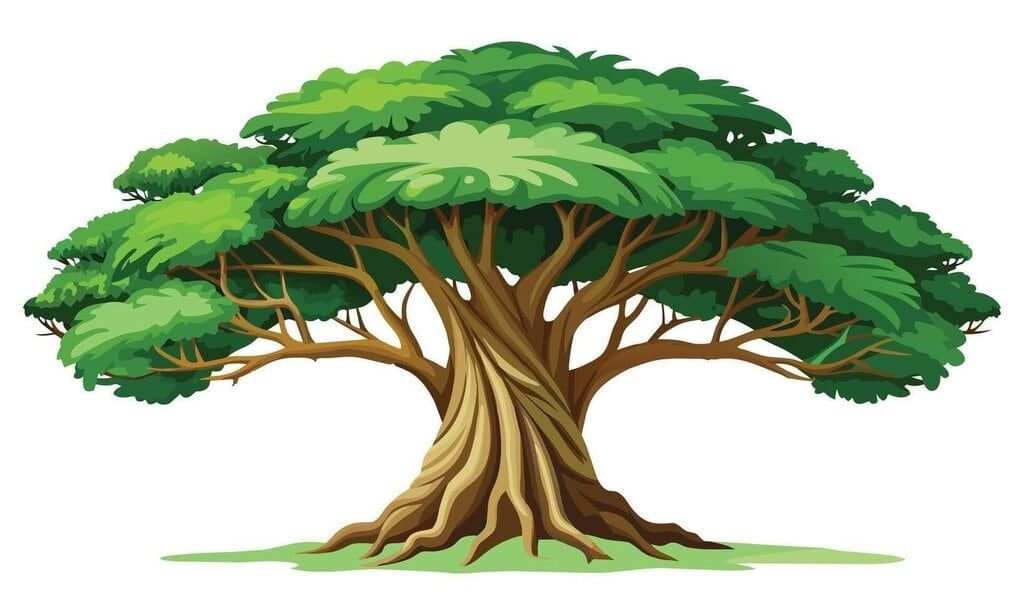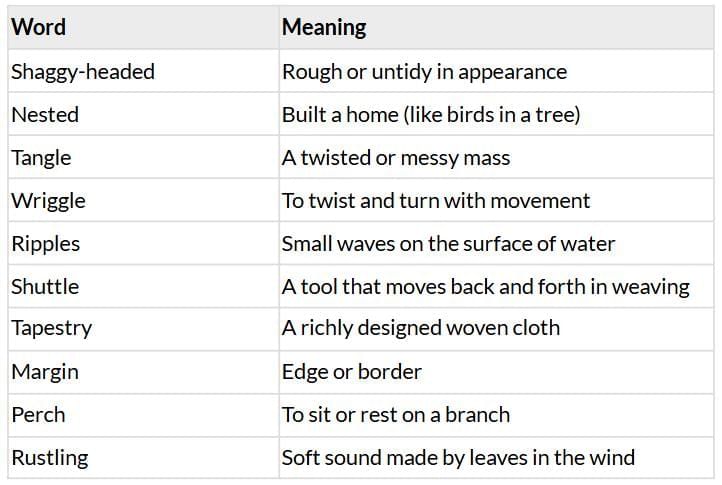Summary: The Banyan Tree | Gul Mohar Class 6: Book Solutions, Summaries & Worksheets PDF Download
| Table of contents |

|
| About the Author |

|
| Detailed Summary |

|
| Moral / Message |

|
| Vocabulary Table |

|
About the Author
Rabindranath Tagore (1861–1941) was a great Indian poet, philosopher, and thinker. He wrote poems, plays, novels, essays, and songs. In 1913, he became the first Asian to win the Nobel Prize in Literature for Gitanjali. He also wrote India’s national anthem, Jana Gana Mana.
Detailed Summary
Stanza 1
O you shaggy-headed banyan tree standing on the bank of the pond,
have you forgotten the little child, like the birds
that have nested in your branches and left you?
The poet speaks to the banyan tree as if it were alive. He asks if the tree remembers a small child who once loved it deeply. Just like birds that made nests in its branches and later flew away, the child too has grown up and gone. The tone here is nostalgic, showing a longing for childhood memories.

Stanza 2
Do you not remember how he sat at the window
and wondered at the tangle of your roots that plunged underground?
The child would often sit by the window and stare at the banyan tree. He was fascinated by its thick and twisted roots, which went deep into the earth. These roots seemed mysterious and magical to him, as if they held secrets underground. The stanza reflects the child’s sense of wonder and curiosity about nature.
Stanza 3
The women would come to fill their jars in the pond,
and your huge black shadow would wriggle on the water
like sleep struggling to wake up.
The banyan tree stood by a pond where village women came daily to collect water. As they worked, the tree’s large shadow moved on the surface of the pond. The poet compares this moving shadow to sleep trying to awaken, creating a dream-like image. This shows how the tree was part of the daily life and beauty of the village.
Stanza 4
Sunlight danced on the ripples
like restless tiny shuttles weaving golden tapestry.
Here, the poet describes how sunlight fell on the rippling pond. The light sparkled and moved, looking like tiny weaving shuttles at work. Together, the ripples and sunlight created patterns like golden cloth being woven. This stanza shows how nature itself seems to create art and beauty.
Stanza 5
Two ducks swam by the weedy margin above their shadows,
and the child would sit still and think.
Two ducks swam peacefully near the edges of the pond where weeds grew. Their shadows floated beneath them in the water. The child would watch them silently and begin to think deeply. This moment shows how nature inspired the child to reflect and imagine.
Stanza 6
He longed to be the wind and blow through your rustling branches,
to be your shadow and lengthen with the day on the water,
to be a bird and perch on your topmost twig,
and to float like those ducks among the weeds and shadows.
The child dreamed of becoming one with nature. He wished to be the wind moving through the banyan’s leaves, or the shadow stretching with the sun. He longed to be a bird sitting on the highest branch, or a duck gliding on the water. These wishes show his desire for freedom, joy, and closeness to the natural world.
Moral / Message
The poem reminds us of the innocence and wonder of childhood. Through the child’s eyes, ordinary sights like a tree, pond, and ducks become magical and full of meaning. It teaches us to value our bond with nature, as it gives peace, imagination, and freedom. The banyan tree stands as a symbol of timeless beauty, inspiring us to pause and see the world with fresh eyes.
Vocabulary Table

|
30 videos|61 docs|17 tests
|
FAQs on Summary: The Banyan Tree - Gul Mohar Class 6: Book Solutions, Summaries & Worksheets
| 1. What is the central theme of "The Banyan Tree"? |  |
| 2. How does the banyan tree symbolize different aspects of life in the story? |  |
| 3. What moral lessons can be derived from "The Banyan Tree"? |  |
| 4. What role do the characters play in shaping the narrative of "The Banyan Tree"? |  |
| 5. How does the author's descriptive language enhance the story of "The Banyan Tree"? |  |















